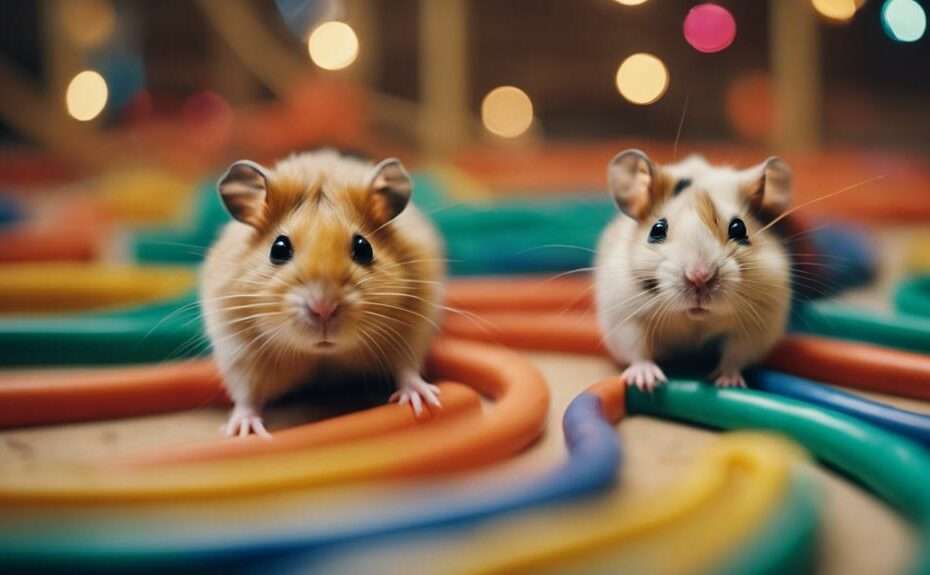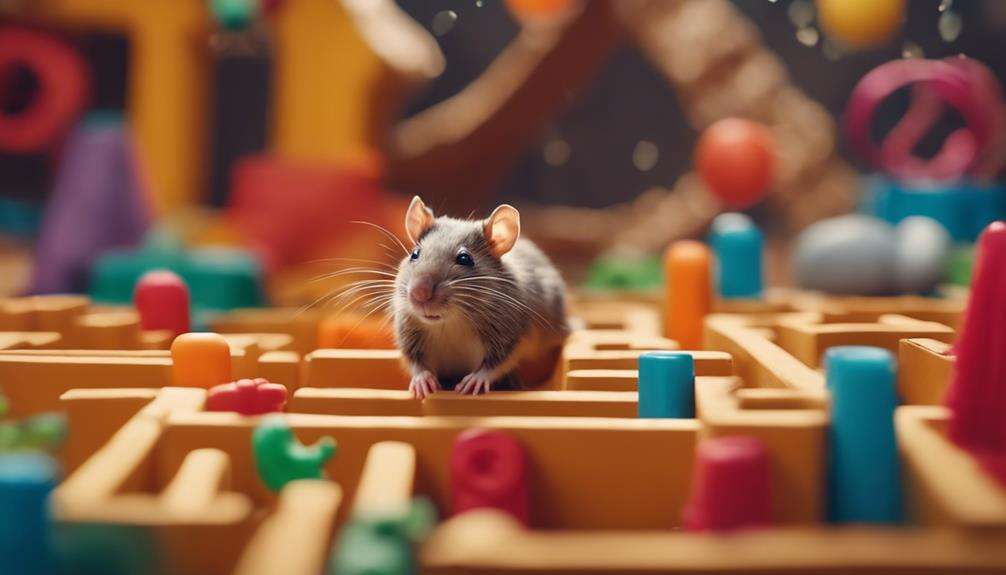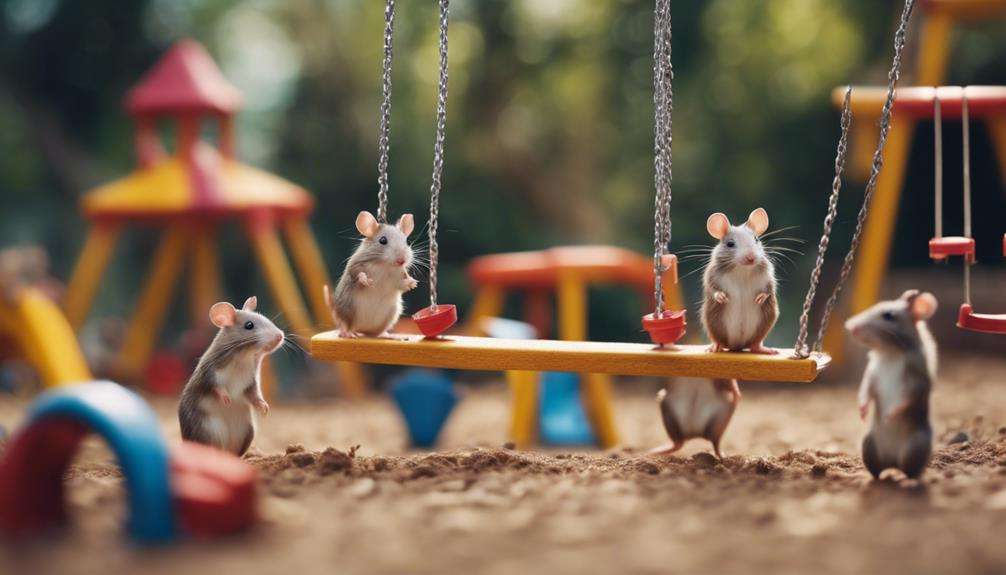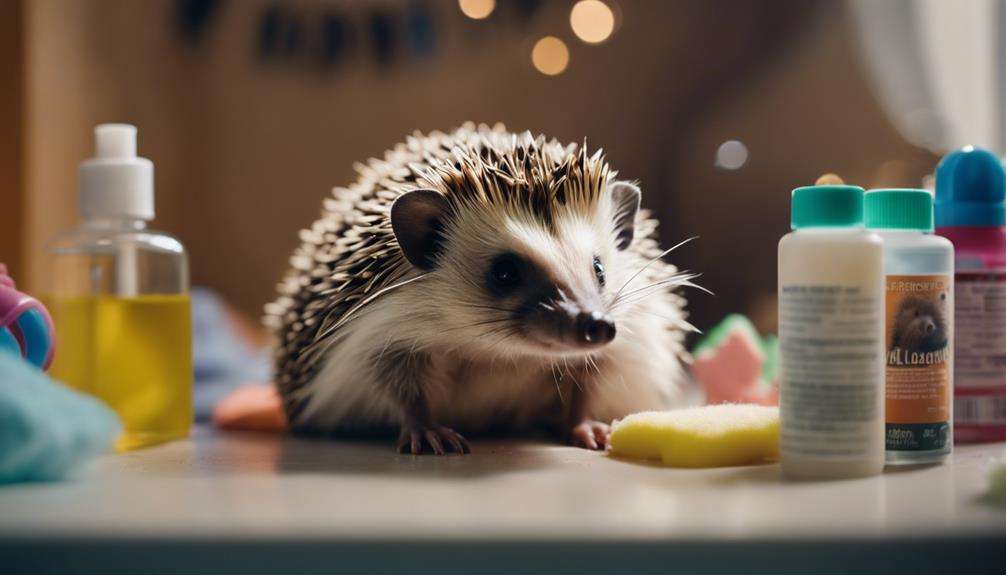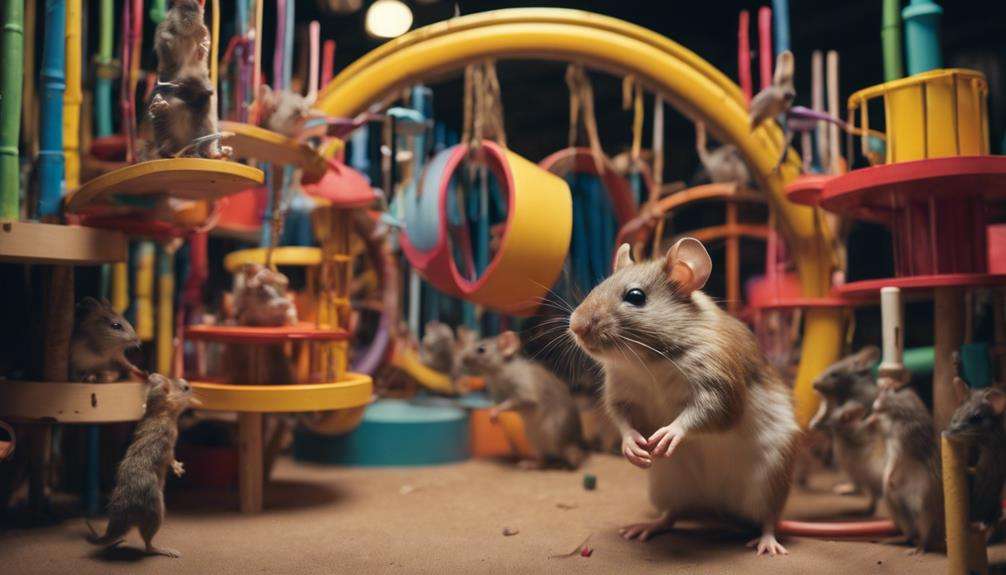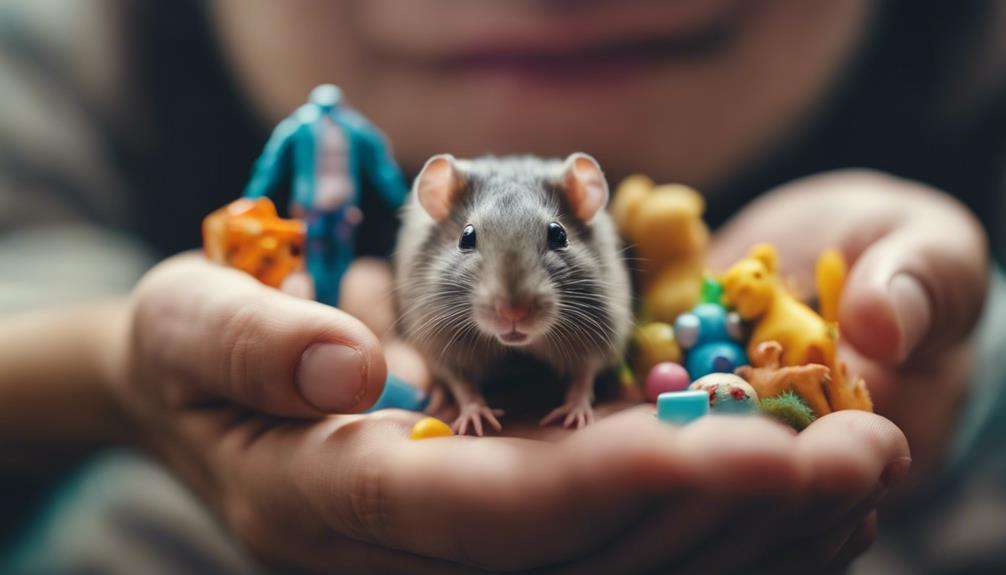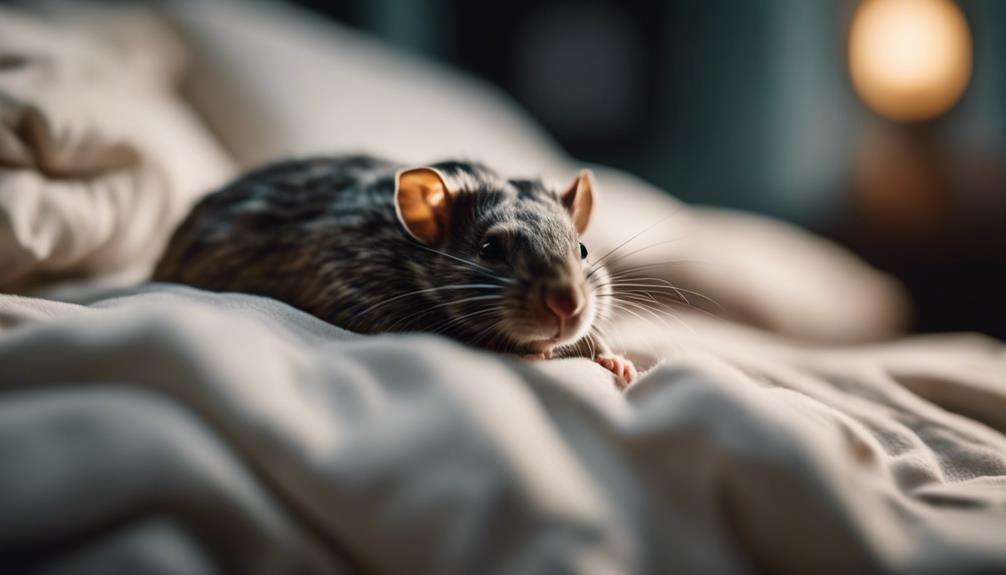When it comes to training quirky rodents, think of it as unlocking a hidden treasure chest of possibilities.
With seven carefully selected methods tailored for these unique creatures, you'll find yourself on a journey of discovery and growth.
Each technique offers a glimpse into the fascinating world of rodent cognition and behavior.
Stay tuned to uncover the secrets behind fostering a harmonious relationship with your unconventional pet through innovative training strategies. Let's explore these intriguing avenues together.
Key Takeaways
- Clicker training and positive reinforcement build trust and shape behaviors effectively.
- Maze training enhances cognitive stimulation and problem-solving skills in rodents.
- Enrichment activities like puzzles promote mental well-being and stimulate natural behaviors.
- Target training and agility exercises cater to unique rodent species for specialized training.
Clicker Training for Quirky Rodents
Clicker training for quirky rodents like rats and mice is a highly effective method that utilizes a clicker device to mark and reinforce desired behaviors instantly. The click sound serves as a bridging signal, precisely informing the rodent of the exact moment they exhibited the correct behavior. This clear communication enhances the learning process for these intelligent creatures. By consistently pairing the clicker with rewards, positive behaviors are reinforced during training sessions.
In clicker training, the rodent learns to associate the sound of the clicker with a reward, creating a strong motivation to repeat the behavior that prompted the click. This method is particularly useful for rodents with quirky behaviors, as it allows for precise feedback and encourages them to engage in desired actions. Clicker training can help build trust between the rodent and the trainer, making the training process more enjoyable and effective. With patience and consistency, clicker training can transform quirky rodents into well-behaved and responsive companions.
Positive Reinforcement Techniques for Rodents
When training quirky rodents like rats and mice, utilizing positive reinforcement techniques, such as offering treats, can be highly effective in shaping their behavior. Rewarding desired behaviors with treats helps reinforce those behaviors and encourages rodents to repeat them. Consistent use of positive reinforcement creates a strong bond between the trainer and the rodent. Rodents respond well to immediate rewards, making positive reinforcement a powerful tool in training.
Positive reinforcement techniques, such as using treats, are highly effective for training quirky rodents like rats and mice.
Rewarding desired behaviors with treats helps reinforce those behaviors and encourages rodents to repeat them.
Consistent use of positive reinforcement creates a strong bond between the trainer and the rodent.
Rodents respond well to immediate rewards, making positive reinforcement a powerful tool in training.
Target Training for Unique Rodent Species
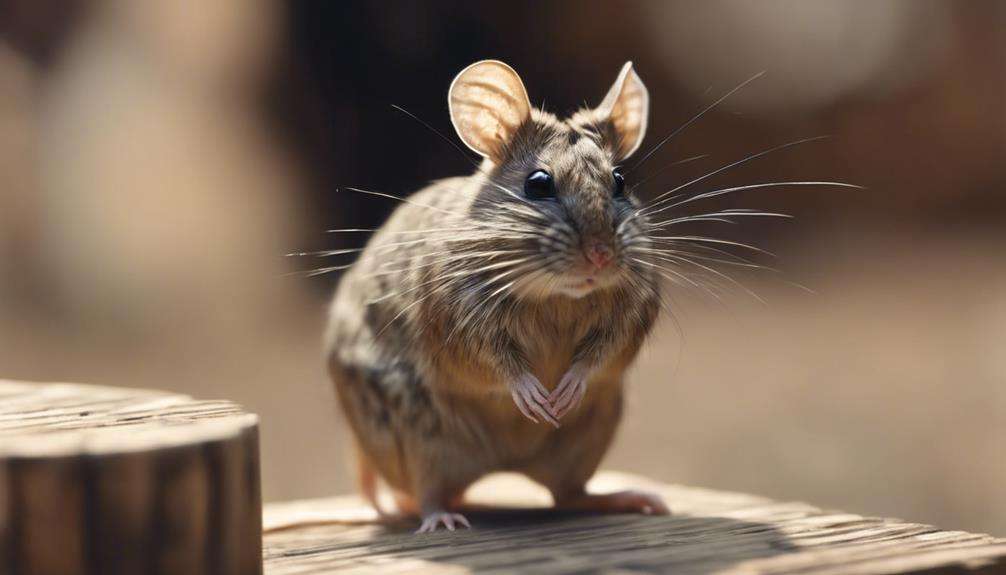
To enhance the training of unique rodent species, incorporating target training techniques can significantly boost their focus and engagement during sessions. Target training involves teaching rodents to touch a specific object, like a stick or a ball, with their nose or paw.
This method is versatile and can be effectively used with various rodent species such as gerbils, hamsters, and guinea pigs. By associating the target object with a reward, rodents quickly learn to follow and interact with the target, making the training process more effective and enjoyable for them.
Not only does target training help in building focus and mental stimulation in quirky rodents, but it also allows for precise communication. This precision enables rodents to learn complex behaviors and tricks, making training sessions more interactive and rewarding for both the trainer and the rodent.
Target training is a valuable tool in the repertoire of training methods for unique rodent species.
Agility Training for Exotic Rodents
When it comes to agility training for exotic rodents, the focus is on enhancing their speed and coordination through various obstacle course challenges. These challenges include tunnels, ramps, and bridges that aim to stimulate their minds and promote physical exercise.
Speed and Coordination
How can agility training enhance the speed and coordination abilities of exotic rodents?
Agility training focusing on speed and coordination can greatly benefit exotic rodents, particularly in developing their hind legs strength and overall physical capabilities. To make the most out of this training, consider the following:
- Incorporating exercises that specifically target the hind legs muscles.
- Implementing obstacle courses with various elements to challenge their agility.
- Using positive reinforcement techniques to encourage active participation.
- Providing mental stimulation and physical exercise through agility training sessions.
Obstacle Course Challenges
Setting up intricate obstacle courses with tunnels, ramps, and hurdles is a key component of agility training for exotic rodents like the pet rat. These courses offer mental and physical stimulation, challenging your pet rat to navigate through different elements. By engaging in agility training, your pet rat can enhance its coordination and problem-solving skills.
Remember to keep training sessions short and positive to maintain your pet rat's motivation. Agility training not only benefits your pet rat but also fosters trust between you and your furry friend. It provides a fun and interactive way to bond while keeping your pet rat active and entertained.
Incorporating obstacle course challenges into your training routine can lead to a happier and healthier pet rat.
Reward-Based Training
To effectively train exotic rodents like pet rats in agility skills, utilizing reward-based methods is essential for motivating these quirky creatures and reinforcing desired behaviors. Reward-based training is highly effective for teaching agility skills to exotic rodents like rats and mice.
Here are some key points to consider when implementing reward-based training for agility:
- Using positive reinforcement with treats helps motivate quirky rodents to engage in agility training.
- Agility training can improve the physical and mental well-being of exotic rodents by providing exercise and mental stimulation.
- Rewarding desired behaviors during agility training reinforces the desired actions in quirky rodents.
- Consistent use of rewards and positive reinforcement leads to successful agility training outcomes for exotic rodents.
Behavior Shaping Methods for Quirky Pets
What role does positive reinforcement play in effectively training quirky rodents through behavior shaping methods?
Positive reinforcement is crucial in behavior shaping techniques for training quirky pets. By rewarding incremental progress towards a desired behavior, such as spinning, jumping, or waving, you can guide your quirky rodent to perform complex tricks. Consistent positive reinforcement helps reinforce the desired behaviors, making it more likely for your pet to repeat them in the future.
Patience and consistency are key when using behavior shaping methods, as it may take time for your rodent to understand and execute the behaviors you're trying to teach. By breaking down complex tricks into smaller, achievable steps, behavior shaping helps quirky rodents grasp new behaviors more easily.
Problem-Solving Training Approaches for Rodents
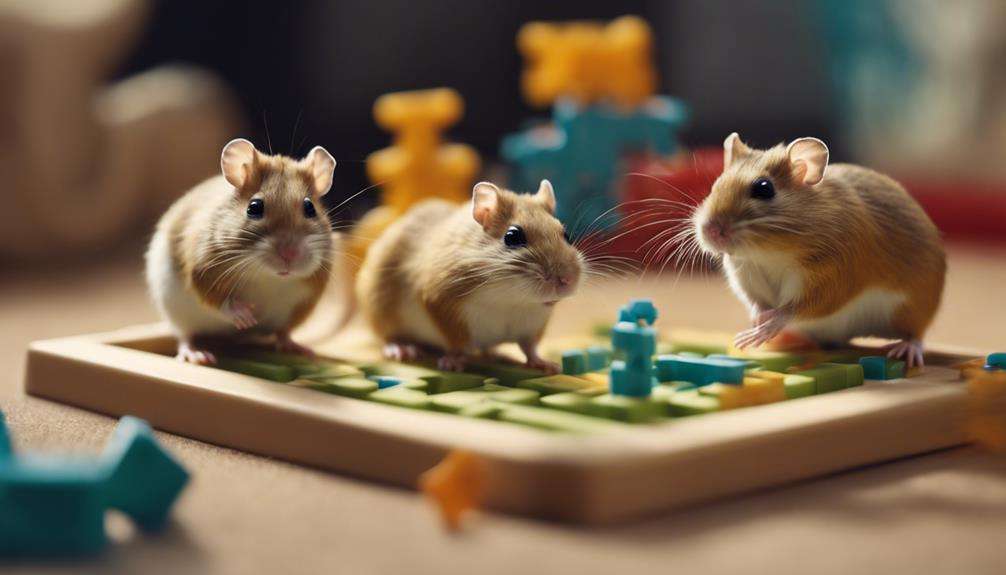
To engage your quirky rodents in problem-solving training, consider incorporating maze-solving tasks and puzzle challenges into their enrichment activities.
These mental exercises can stimulate their curiosity and intelligence while providing a fun and rewarding experience.
Maze-Solving Tasks
In training quirky rodents, maze-solving tasks serve as a fundamental approach to enhancing problem-solving skills and cognitive abilities. These tasks are popular among researchers studying rodents like rats and mice.
Here are some key points to consider when implementing maze-solving tasks:
- Varying levels of complexity: Mazes challenge rodents with different difficulty levels to stimulate their cognitive abilities.
- Cognitive stimulation: Rodents use spatial memory, problem-solving skills, and sensory cues to navigate through mazes.
- Learning enhancement: Maze training can improve rodents' learning capabilities, memory retention, and decision-making skills.
- Research tool: Researchers utilize maze-solving tasks to delve into rodent behavior, cognition, and neurobiology in controlled laboratory settings.
Puzzle Challenges
Puzzle challenges offer an engaging approach for enhancing problem-solving skills and cognitive abilities in quirky rodents, building upon the foundation laid by maze-solving tasks. These challenges involve maze navigation, food puzzles, or interactive toys that require manipulation, stimulating the rodents' behavior and intellect. By engaging in puzzle challenges, rodents enjoy mental stimulation and the rewards associated with successful completion.
Such problem-solving training approaches not only prevent boredom but also promote mental well-being in these quirky animals. Additionally, incorporating puzzle challenges into training sessions can strengthen the bond between you and your rodent, fostering a deeper understanding of their behavior and capabilities.
Consider introducing puzzle challenges to your rodent's routine for a fun and enriching experience.
Enrichment Activities for Quirky Rodents
Stimulating quirky rodents' natural behaviors, such as foraging and climbing, through enrichment activities is essential for their mental and physical well-being. To keep your quirky rodents engaged and happy, consider the following enrichment activities:
- Provide a variety of toys: Offering toys like running wheels, chew toys, and hanging toys can keep your quirky rodents mentally stimulated and physically active.
- Set up tunnels and hideouts: Creating a maze of tunnels and cozy hideouts can encourage exploration and provide a sense of security for your quirky rodents.
- Rotate toys regularly: Switching up their toys and introducing new items periodically prevents boredom and promotes curiosity in quirky rodents.
- Use puzzle feeders and treat-dispensing toys: These toys offer mental challenges and rewards, keeping your quirky rodents engaged and entertained while providing cognitive stimulation.
Frequently Asked Questions
How Do You Train a Rodent?
To train a rodent, start with behavior modification through positive reinforcement. Use short sessions, high-value rewards, and a quiet setting. Focus on patience, consistency, and trust-building. Handle the rodent gently, provide mental stimulation, and enjoy the process.
What Is the Easiest Rodent to Train?
When training hamsters, use positive reinforcement with treats to motivate them. Keep training sessions short and consistent. Understand their solitary and nocturnal habits, adjusting training times accordingly. Patience and gentle handling are key.
Can Fancy Rats Be Trained?
Yes, fancy rats can be trained, overcoming challenges like consistency and patience is crucial. Their intelligence allows for learning tricks and commands, strengthening the bond with their owner. Training offers mental stimulation and a fun activity for these intelligent rodents.
How Do You Train Rats to Like You?
To train rats to like you, focus on behavior modification. Spend time near your rats, offer treats from your hand, handle them gently, talk soothingly, and engage in play sessions. Consistency and positive reinforcement are key.
Conclusion
In conclusion, mastering the art of training quirky rodents is like navigating a maze of endless possibilities. By employing the right techniques and building a strong bond with your furry friend, you can unlock their full potential and create a truly enriching experience.
Remember, patience and consistency are your compass, guiding you through the twists and turns of rodent training. So, embark on this exciting journey with your little companion and watch as they shine like a diamond in the rough.
